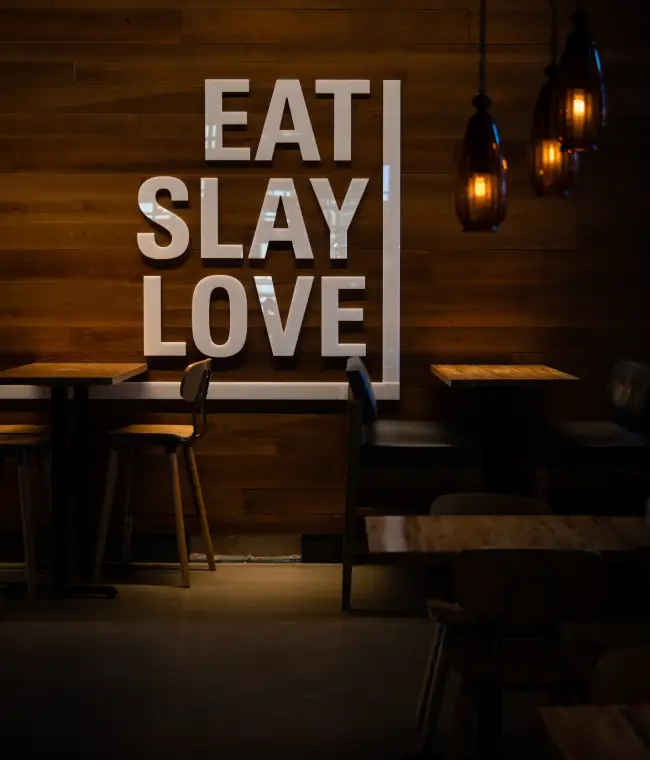Transform your WordPress content with a modern, minimalist design
Are you ready to give your WordPress website a fresh look? Dive into this guide to see how you can transform your site with a clean, multi-column layout that’s both sleek and user-friendly.
Original design overview
The original design employs a structured multi-column format with two rows and four columns, presenting your content in an orderly fashion. With bold headers and pertinent images, it offers an engaging experience to keep visitors hooked. The striking black background further enhances readability and makes your content stand out.
Detailed analysis of the image
Layout analysis
- Overall structure: A two-column format for each section enhances readability.
- Rows and columns arrangement: Two rows and four columns help streamline navigation and understanding.
- Asymmetrical choices: Variations in content length inject a touch of dynamism to the symmetrical layout.
Element and feature description
- Visible elements:
- Headers: Numbered headers like “01. Innovate” for easy navigation.
- Text blocks: Provide context with descriptions under each header.
- Images: Complement visuals to enrich understanding.
- Interactive elements: Although interactive features like buttons aren’t included, the design suggests room for such additions.
- Typography: The mix of bold headers with legible body text prioritizes clarity and emphasis.
- Icons and graphical elements: Rounded images enhance visual storytelling.
Unique design aspects
- Standout design choices: The dark background provides a striking contrast to spotlight your content.
- Hover effects or animations: These are absent, yet provide an avenue for future enhancements.
- Responsive design elements: Seamless adaptation across devices boosts mobile usability.
- Accessibility considerations: High contrast supports readability, but improving font size and alt text would elevate it further.
Overall design style
- Design style categorization: Leans towards modern minimalist, focussing on simplicity.
- Visual hierarchy: Guides flow from headers to images to texts, ensuring a smooth information relay.
- Use of white space and balance: Ample white space around elements maintains visual balance, ensuring focus on content.
10 ways to organize content in WordPress
1. Utilize categories and tags
Categories and tags help structure your content, ensuring visitors can easily navigate your site. Categories group related content, while tags offer more specific details, enhancing searchability. For effective WordPress navigation menus, use categories to cover broad topics and tags for detailed aspects of each piece.
2. Implement custom post types
Custom post types allow you to present different kinds of content separately, such as portfolios or testimonials, without interrupting your blog feed. Leverage this feature to tailor your WordPress templates to serve specific content types, enhancing the site’s coherence and professionalism.
3. Feature sticky posts
Sticky posts are fixed at the top of your homepage, ensuring key information remains visible. Ideal for announcements or updates, this feature helps keep your community informed. Use this to draw attention to crucial WordPress navigation menus changes or promotions.
4. Organise with hierarchical pages
Using hierarchical page structures aids seamless navigation. Create parent and child pages to logically arrange sections of your site, making it easier for users to find information. This organization enhances user experience, particularly in sites with extensive content.
5. Employ sidebar widgets strategically
Sidebar widgets offer a versatile way to highlight important content or features without disrupting the main content flow. Use them to feature social media links, popular posts, or recent comments, providing additional context and engagement opportunities.
6. Tailor menus for user needs
Customizing your navigation menu based on user needs can significantly enhance user experience. Reorganize WordPress block themes to reflect your site’s priorities and guide users effortlessly through your offerings.
7. Create engaging landing pages
Landing pages focus on particular topics, events, or promotions, offering a clear call to action. Use these pages to spotlight new releases or campaigns, driving engagement and conversion. Ensure they align with your overall WordPress website aesthetics and goals.
8. Implement taxonomy descriptions
Adding descriptions to your categories and tags helps visitors understand what content they encompass. Use taxonomy descriptions to provide clarity and context, enhancing both user interface and SEO. These insights can guide users to content that suits their interests.
9. Schedule content for regular updates
Consistency is key in maintaining reader interest. Use WordPress’s scheduled posts feature to plan regular content updates, keeping your site dynamic and engaging. Regular updates signal to visitors and search engines alike that your site is active and well maintained.
10. Optimize for search engines
SEO integration within WordPress enhances visibility and user reach. Focus on keywords, meta descriptions, and alt text to ensure your content ranks well on search engines. Consider employing plugins to simplify this process, ensuring your site remains both user-friendly and search-friendly.
10 different types of content in WordPress
1. Blog posts
Blog posts are the lifeblood of many WordPress sites, offering a platform for regularly updated content. Use them to share news, stories, or insights relevant to your audience. Optimizing your posts for keywords and SEO can significantly boost your site’s visibility and reader engagement.
2. Static pages
Unlike posts, static pages are built for content that rarely changes, like ‘About Us’ or ‘Contact’ pages. These pages provide essential information and form the backbone of your website’s structure, supporting user navigation and reinforcing your site’s purpose and credibility.
3. Portfolios
Portfolios showcase your best work, ideal for designers, photographers, or creatives. They empower you to craft a visually appealing gallery that highlights your talents and achievements, offering visitors a taste of your skills through a curated experience.
4. Testimonials
Testimonials build trust by showcasing endorsements from satisfied clients or customers. They serve as social proof, substantiating your product or service claims through real-world success stories, and can positively influence potential customers’ decisions.
5. eCommerce product listings
With plugins like WooCommerce, you can turn your WordPress site into a robust eCommerce platform. Product listings enable you to display your inventory with descriptions, prices, and images, creating an effective and seamless shopping experience for your customers.
6. Case studies
Case studies delve into specific examples of how your services or products have benefited clients, offering detailed narratives to potential customers. They provide a comprehensive insight into problem-solving capabilities and outcomes, adding depth to your portfolio.
7. Events
Utilizing event calendar plugins, you can schedule and detail upcoming events on your website. This feature is essential for businesses and organisations looking to promote events, ensuring attendees have all needed information regarding dates, locations, and ways to join.
8. Tutorials
Tutorials offer practical, step-by-step guides to help users navigate tasks or challenges. They provide educational value to your audience, enhancing engagement and positioning you as an expert resource in your field, whether through written tutorials or video content.
9. Forums
Forums cultivate community engagement by allowing users to interact, ask questions, and share knowledge. They create a bustling space on your website, encouraging repeat visits and user contributions as a lively part of your online presence.
10. Podcasts
Integrating podcasts expands your reach with audio content, perfect for listeners on the go. Host your episodes directly on your site, offering additional value and insight, while guiding new audiences to your WordPress hub through compelling audio storytelling.
Conclusion
Embracing a WordPress website design that harnesses modern, minimalist aesthetics, along with skilled content organization, ensures an engaging and efficient visitor experience. By integrating diverse content types and employing smart organizational strategies, your site can become a bustling, user-friendly hub. Whether you’re utilizing Elementor alternatives or exploring free WordPress themes, continuously improving both aesthetic and functional aspects of your WordPress site will ensure it remains welcoming and effective.







